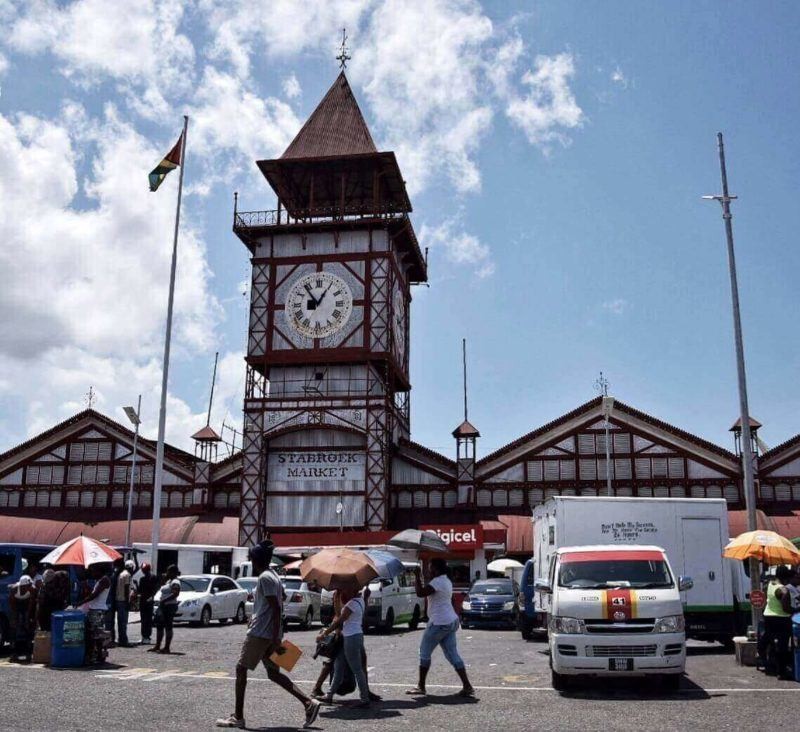West Indies Cricket Fans Forum
PLANTATION Hope Estate is located on the East Coast of Demerara
PLANTATION Hope Estate is located on the East Coast of Demerara. The estate occupies approximately three thousand acres, extending from the Atlantic on the north, to the Crown Dam on the South; and from Dochfour on the east to Noontenzuil on the West. The estate engages with approximately 200 tenant farmers whose main produce are cash crops, rice, and there is also some engagement in animal husbandry. Cash crop farming occupies the largest acreage of the estate.
Hope Estate has established a landing depot where farmers display their produce for inspection, and conduct transactions with wholesalers and distributors. Transportation could be accessed through water and roadways. What is noticeable is the binding link between the farmers and the middlemen.
The tenant farmers are mainly residents located in the estate proper, and in the environs of Plantation Hope. With the advent of the PPP/C administration, Hon. Zulfikar Mustapha, Minister of Agriculture, has initiated a multiplicity of protective and enabling initiatives to facilitate solutions to the farmers’ essential requirements in prioritised interventions. One of the most vital prerequisites of any agricultural activity is maintenance of D&I structures, as the exigencies of effective drainage and irrigation systems cannot be emphasised enough.

The immediacy of his response to the Hope Estate farmers’ needs has resulted in attention to many areas, primarily the dispatch of an excavator to rehabilitate and clean all waterways so as to enhance efficacy and efficiency to farming activities. This has tremendously boosted the morale of the farmers and increased productivity. The work programme mandated by the board will eventuate in a totally transformed estate, which will not only be superlatively productive, but will alter the landscape of the area. Hope Coconut Industries Limited (HCIL) is leading the way in coconut production, through the Ministry of Agriculture, which is establishing coconut nurseries in seven regions countrywide. This initiative is the brainchild of the minister, who recognises the potential of the industry to increase local and foreign revenue as coconut and every part of the tree can be utilised in manifold ways, as has been demonstrated in India and other far-eastern countries. Hope coconut Industries LTD is a subsidiary of the Ministry of Agriculture and it is located at Hope Estate. The hallmark of the estate is its diversification capabilities. The minister is advising, and providing the enabling synergies, for strengthening of the diversification programme. Relevant training will provide farmers with the requisite skills and the benefits to be garnered from best farming practices, including inter-cropping, as well as introducing new varieties of crops, which could add to their revenue.
H C I L has the requisite agricultural equipment, which are always available to rent to farmers at a minimal price to cover maintenance costs. One of the many benefits is making farming less labour-intensive: i.e., land preparation, etc. The ministry has assigned full-time extension officers to render advisory and farming-related services to all farmers at Hope Estate. The conservancy provides bountiful fresh water to the estate, which facilitates all aspects of farming. Recently, bridges and culverts were rehabilitated to enable increased road transportation services and controlled water usage. HCIL is becoming a model to guide traditional farmers to advance in the field of technological farming. Already, shade houses and drip irrigation systems are being used by farmers to enhance production and increase quantity and quality of produce. A newly extended and fully rehabilitated office building was completed to house staff, facilitate board meetings and to engage farmers. An area of approximately 40 acres is provided for cattle-rearing. The management of the estate is encouraging aggressive farming that is consistent with estate policy and to eliminate violations of the tenancy agreement that is mutually binding to farmers and the estate.
Guyana Diaspora Forum
We have a large database of Guyanese worldwide. Most of our readers are in the USA, Canada, and the UK. Our Blog and Newsletter would not only carry articles and videos on Guyana, but also other articles on a wide range of subjects that may be of interest to our readers in over 200 countries, many of them non-Guyanese We hope that you like our selections.
It is estimated that over one million Guyanese, when counting their dependents, live outside of Guyana. This exceeds the population of Guyana, which is now about 750,000. Many left early in the 50’s and 60’s while others went with the next wave in the 70’s and 80’s. The latest wave left over the last 20 years. This outflow of Guyanese, therefore, covers some three generations. This outflow still continues today, where over 80 % of U.G. graduates now leave after graduating. We hope this changes, and soon.
Guyanese, like most others, try to keep their culture and pass it on to their children and grandchildren. The problem has been that many Guyanese have not looked back, or if they did it was only fleetingly. This means that the younger generations and those who left at an early age know very little about Guyana since many have not visited the country. Also, if they do get information about Guyana, it is usually negative and thus the cycle of non-interest is cultivated.
This Guyana Diaspora Online Forum , along with its monthly newsletter, aims at bringing Guyanese together to support positive news, increase travel and tourism in Guyana and, in general, foster the birth of a new Guyana, which has already begun notwithstanding the negative news that grabs the headlines. As the editor and manager of the publication, I am committed to delivering Blog entries and Newsletters that are politically balanced, and focused on the positive ideas we wish to share and foster among Guyanese.
| ||||

